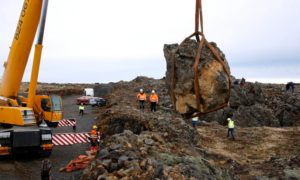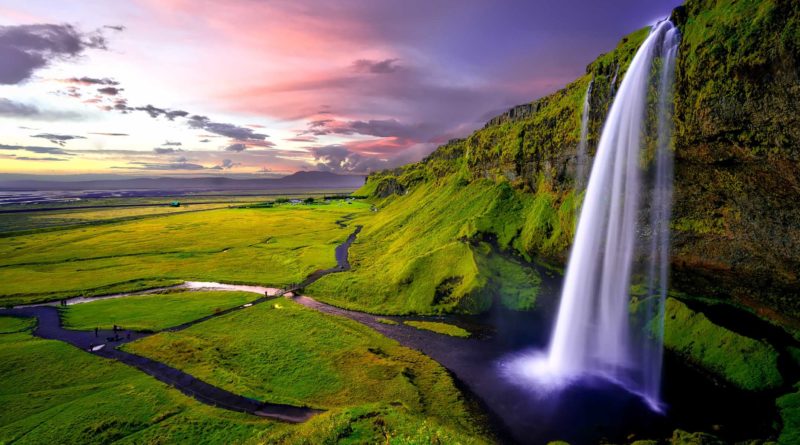THIS country believes in elves
Iceland is famed for its stunning natural wonders such as some of the world’s largest glaciers, geysirs and world’s most active volcanoes; but a little-known fact is the population’s belief and obsession of so called huldufólk, or elves. Yes, a shocking 54% of the population said in a survey that they believe in them or believe that their existence is possible.
To further understand Icelandic elves, I interviewed Ólafur Indriðason, an Icelandic student at EEB1 (and the only Icelandic student enrolled in a European School), as well as doing my own research.
 Ólafur tells me that, according to legend, Elves were created because of a couple that had a considerable amount of children. One day, God was planning to visit them but all of their kids were dirty, so they started cleaning these children, but ran out of time to clean all of them. The half of the children that were still uncleaned were hidden in a rock so that God wouldn’t see them. God, however, all-knowing as He is, realised that they were deceiving Him, and, in punishment, God made the dirty children invisible to everyone forever. These elves are believed by many to have vastly grown in population and to exist abundantly in Iceland today, known by the people as “the elves” or “the hidden people”.
Ólafur tells me that, according to legend, Elves were created because of a couple that had a considerable amount of children. One day, God was planning to visit them but all of their kids were dirty, so they started cleaning these children, but ran out of time to clean all of them. The half of the children that were still uncleaned were hidden in a rock so that God wouldn’t see them. God, however, all-knowing as He is, realised that they were deceiving Him, and, in punishment, God made the dirty children invisible to everyone forever. These elves are believed by many to have vastly grown in population and to exist abundantly in Iceland today, known by the people as “the elves” or “the hidden people”.
I learned that elves are, according to the Icelandic folk, pretty much like human beings. They’re the same size as us, don‘t wear pointy hats, and apart from the fact that they‘re invisible, look like us. One definite differing characteristic is, however, that they tend to have abnormally large ears.In Iceland, elves affect everyday life. There‘s a whole elf culture, apparently. There are elf specialists who claim they can sense the presence of invisible elf villages. Iceland takes these claims very seriously: roads being built in a straight line, for example, will suddenly take a random curve before continuing on their path in order to avoid running through an elf village. There are certain rocks under which an elf village is supposed to be, and are regarded as elf monuments; it is illegal to move them. Building projects are cancelled or altered in order to preserve alleged elf villages. Elf activists entertain legal battles to protect elf villages and elf chapels. Bad luck is said to ensue for those who meddle with the elves – there are a myriad of stories of accidents occurring, machines breaking down and workers mysteriously becoming ill when elf rocks are attempted to be moved, of abundant car accidents on roads that were paved through an elf village, of years-long bad luck following those who didn’t respect elf settlements. Some of these rocks have decades worth of ‘bad luck’ stories.
the presence of invisible elf villages. Iceland takes these claims very seriously: roads being built in a straight line, for example, will suddenly take a random curve before continuing on their path in order to avoid running through an elf village. There are certain rocks under which an elf village is supposed to be, and are regarded as elf monuments; it is illegal to move them. Building projects are cancelled or altered in order to preserve alleged elf villages. Elf activists entertain legal battles to protect elf villages and elf chapels. Bad luck is said to ensue for those who meddle with the elves – there are a myriad of stories of accidents occurring, machines breaking down and workers mysteriously becoming ill when elf rocks are attempted to be moved, of abundant car accidents on roads that were paved through an elf village, of years-long bad luck following those who didn’t respect elf settlements. Some of these rocks have decades worth of ‘bad luck’ stories.
Ólafur says he doesn’t believe in elves, and neither does his family, but he knows that most of the people who do are farmers or other remote, often uneducated people living outside of Reykjavik, the capital city. He is very insistent that elves are not the same thing as fairies – “For me, fairies are small, winged creatures of Nature in Northern Ireland or something. Like Tinkerbell. Elves are dirty little children”.
Alexandra Von Koppenfels / S6EN / Uccle Bruxelles 1
Photos : theguardian.com / wikimedia.org





This article was very interesting! I didn’t know anything about this before 🙂